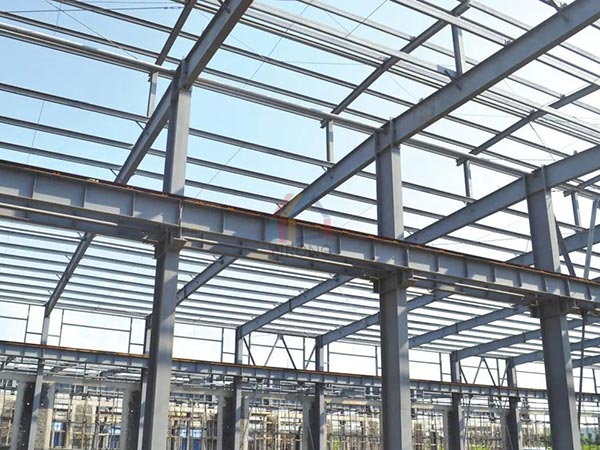What are the steel selection requirements and connection methods for steel structures?
During the machining of steel structures, a large amount of steel is polished into the desired shape. Many unsuitable steel pumps were found during processing and never used. Additionally, we know that the performance of steel connection methods varies from place to place. When using, choose according to architectural characteristics, the effect is more stable, let us understand how these products are connected together.

Steel structure connection method:
1. Solder connection
Advantages: The structure is simple, and parts of any shape can be directly connected. Save work and material, easy to process, no drilling, no weakening of the section. The construction speed is fast and automatic operation can be realized. Good connection tightness, high rigidity and good integrity.
Disadvantages: The material is brittle, and it is easy to generate residual stress and residual deformation, which has an adverse effect on the fatigue and stability of the steel structure, and requires high welding requirements.
2. Bolt connection
Advantages: simple construction, convenient installation and disassembly, high requirements for installers, fatigue resistance, and easy to prevent cracking and expansion.
Disadvantages: During the installation of the steel construction, this connection method will consume materials, weaken the opening section, and improve the machining accuracy of the bolt holes.
3. Rivet connection
Advantages: plasticity. Toughness is good, dynamic performance is good.
Disadvantages: waste of material, the process of heating and riveting is very difficult.
We analyze the connection method of the steel structure. In the construction process, you can choose the connection method according to your own situation.

Steel selection requirements:
1. High tensile strength and yield strength are indicators to measure the bearing capacity of the structure.
The elastic limit can reduce structural weight, saving steel and cost. Tensile strength is an index to measure the tensile strength of steel after deformation, which directly reflects the advantages and disadvantages of the internal structure of the steel construction. At the same time, the elastic limit can improve the reliability of the structure during the steel structure processing.
2. Greater plasticity and toughness.
Good plasticity and toughness, static steel structure machining has sufficient deformation capacity under dynamic load, which can reduce the tendency of structural brittle damage through high plastic deformation, adjust local stress, and better withstand repeated loads.
3. Good process performance, cold working, hot working and welding.
Good process performance should not only be easy to process into various forms of structures, but also should not have a great adverse effect on the strength, plasticity and toughness of the processed structure due to processing. In addition, according to the specific working conditions of steel structure processing, steel sometimes needs the ability to adapt to corrosion, low temperature and high temperature environment.












